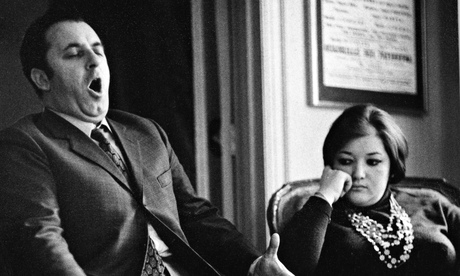This is the
time of year where I traditionally take a few moments to write to all of you,
to express my sincere thanks for your support during the almost three years
that we’ve been involved in this adventure in Classical Music and Blogging.
Every week
it seems, somebody provides feedback on one of our posts, or comments on a
Video we added to our YouTube Channel, or reviewed one of our Internet Archive
submissions. In past years, I took the time to look at statistics, but I find
that to be, for one, a lot of trouble and, two, misleading.
Our Social
Media footprint is always increasing and we have anywhere between 150 and 200
people reading our stuff on a weekly basis – and that’s just the “new” posts.
People find our stuff and “binge” on a bunch of posts! I still get views of
stuff I posted two or three years ago, either on the blogs or on the Archive.
New
subscribers to the Blog, the Facebook feed or the YouTube channel pop up every
week! It’s hard work trying to put the word out on this little initiative, but
it looks like we have quite the modest fellowship!
It will
sound odd to bring it up this way, but I wonder how much longer I can keep
this up.
At the time
of writing this post, we have banked about 180 podcasts, and about 50 other
playlists of MP3 files of music and opera. That’s a lot for one guy! When I
look in my little notebooks and crib motes I write with ideas for more podcasts
and playlists, there’s certainly at least one more year of it in me. After that,
I’m not sure.
It’s not
that I don’t enjoy it – I do. But it’s the time investment that
is becoming the problem. Not only because I chose to maintain several platforms
(here, the Tuesday blog, OTF, the French stuff…) , but because I hold firm to
the principle that if I’m going to do this, I’m going to do it right,
and do my research and write stuff that isn’t bland or curt.
So far,
I’ve been able to do a lot of things in my spare time, over lunch at work, or
during business trips, when I have “alone time”. As time goes on, using the
computer at work becomes a problem, as our administrators block off non-work
related websites in an effort to protect our corporate network.
Everything
in balance, they say… The need to balance “personal” time and “together” time
is something I am more and more aware of. As I said a few months back, my wife
and I have become empty nesters, and she needs more of my attention, since she
is still dealing with not having the kids around, and looking for outlets for
all that extra bandwidth. Some of those outlets are things she – we – want to
do “together”. How can I say “well, I have to work on my blogs, and then we can
go to the movies”…
I have a
goal, and it is to get to the “five year mark”. I’d like to keep this up at
least until April 2016. Five years, that would be a great run, wouldn’t it? Then,
maybe I could put my blogging pants in the closet, at least until I retire and
look for things to do to fill up my days. I still have “miles to go” before
retirement, though…
So, don’t
worry, I’m not planning to stop these adventures, at least not yet. But nothing
lasts forever…
This year,
I did something different, and slowed down during July and August. I may well
do that again next year. We focused on Beethoven during the summer of 2014,
maybe we’ll do Mozart during the Summer of 2015.
Another
thing I did less of this year is podcasting “fragmentary works”. In fact, we
dedicated an entire month of podcasts to “unfinished business” and completed
some work fragments we’d posted over the last couple of years. We also did “one
work montages” for a whole month, and even added a few in the Fall (with
Mahler’s 9th and Britten’s War Requiem). I could do something like
that again next year, I haven’t quite decided yet.
Do you like
the blog’s new look – which we unveiled in the Fall? I did that, in part, to
make the site experience a better one for “mobile” users. Does it work for you?
How about my new Tuesday Blog feature “Vinyl’s Revenge”? Is that something that
you like?
As always,
I’m keen to hear from you either directly, through comments on our platforms
oir event through our Facebook and Google + handles.
So what
about 2015? What’s in store? Here are some themes (and arcs) that I have
planned for next year:
- A Mendelssohn series (that’s coming in January);
- A series on great pianists;
- A look at Max Bruch’s concertos (in fact, there is some cross-connections with the Mendelssohn series that will make this quite compelling)
- I’d like to take a serious bite out of the Mozart Piano Concertos – maybe as part of that Summer series)
- I see lots of works for two soloists or two performers in our future
- I’ve been thinking about “concertos” in a traditional and less-traditional sense
I think
that’s enough teasing our upcoming programs…
Usually,
this post is where I provide my “mixed bag” of YouTube fillers for the year. As
I said earlier, there wasn’t much filler material because we didn’t program
fragmentary works. So, to grow the mixed bag, I’ve thrown in some works that
will remind us of some of the themes we considered in 2015: some Themes and
Variations, maybe some “F”’s and “9”’s, Some Vinyl selections from my
collection…
Also, at
the end of this post, links to some updated directories to podcasts, playlists
and featured works.
Podcast Directory - http://www.docstoc.com/docs/173278726/ITYWLTMT-Directory2014









